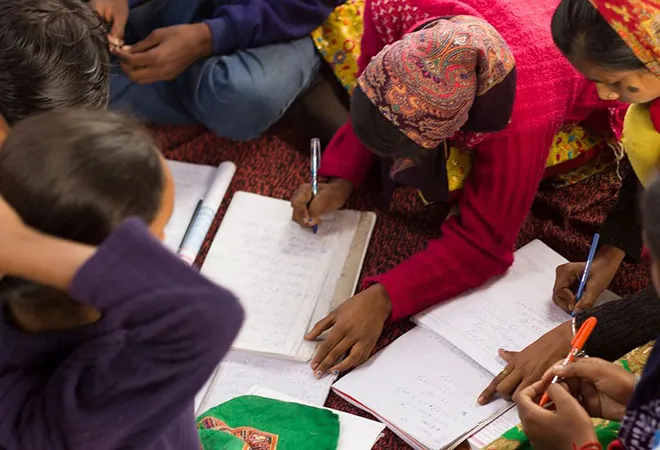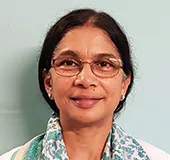-
CENTRES
Progammes & Centres
Location

One of the first issues that came up for close scrutiny post the release of the National Education Policy (NEP) 2020, on 29 July, was the ‘medium of instruction’ in schools. The recommendation of the policy that, wherever possible, the mother tongue/ home language/ local language/ regional language be used as the medium of instruction until Grade 5 and preferably until Grade 8 and beyond, came in for sharp criticism. Yet, this statement is only a more nuanced version of the position taken by the previous two education policies. It recognises that the local language in a particular geography can be different from the regional language in the state. For instance, in the northern regions of Karnataka bordering Maharashtra, Marathi would be the local language, while Kannada is the regional language. Similarly, the mother tongue of the child can be different from the home language (if the mother tongue of each parent is different and they use a third language to converse). All four of these languages – the local, regional, mother tongue and the language spoken at home – can thus be different for some children. The policy is therefore chiefly a recommendation to state governments to support education in all the languages spoken in the state, to the extent possible.
The practice so far, based on the earlier two policies, of adopting the regional language as the medium of instruction throughout the state has meant that only approximately 20 languages are being taught, and the much richer linguistic diversity of the country is being ignored. This practice has also contributed to the sustained, poor, learning outcomes that are being reported in ASER reports each year. It is now well known that there is a negative effect on learning if children are taught in a language that is not their home language or one that they do not understand.
"Early education in the home language: Attaining foundational literacy and numeracy"
The fear, expressed widely in public, was that NEP 2020 is attempting to deny access to English medium education in both government and private schools. On the contrary, the policy is taking an extremely well-researched and nuanced stand on the issue of language learning and the medium of instruction, keeping in mind results from scientific research on language acquisition in children. Children acquire language through interaction with their parents, other adults, and also with other children. It is quite easy for a child to acquire two or more languages at the same time, as long as they are interacting regularly with the speakers of those languages. Recent research also indicates that it is best for children to start learning a second language by age 10 if they are to achieve the grammatical fluency of a native speaker.
These insights regarding language acquisition by children prompted the Dr K. Kasturirangan Committee (in the Draft NEP 2019) and the Government of India in NEP 2020, to recommend continuing with the three-language formula adopted by the two previous policies, but with two very important changes: First, that the three-languages be introduced at much earlier ages – during the foundational stage of 3-8 years, and carrying on into the preparatory stage of 8-11 years – so that young children develop fluency in multiple languages; Second, that the choice of the three languages be left completely to parents and students.
These recommendations regarding medium of instruction and language learning are also closely tied to one of the key stated goals of NEP 2020 namely, to ensure foundational literacy and numeracy for all children by Grade 5 so that the poor results in ASER reports can be addressed. There is a considerable body of evidence supporting the need to give children at least six years of education in a language that they understand, but India has not yet paid heed to this evidence. Too many children do not understand the language being used as the medium of instruction in primary schools today (irrespective of whether that language is a regional language or English), and their ability to learn is severely impacted. This handicap stays with them since the teachers are continuously building upon the earlier learning. Soon, within just a few months, these students fall behind and are unable to catch up and attain foundational literacy and numeracy.
The Draft NEP 2019 also suggested that English be taught well to all children as one of the three languages because studying English is aspirational in India, and students must not miss out on the advantages of being fluent in English. It also recommended that subjects such as Science and Mathematics be taught bi-lingually in English and the home language. There is considerable evidence from non-English speaking countries in Europe such as Germany for instance, that this strategy works and that students can become completely bi-lingual, giving them several advantages in later life. The challenge of course is that multilingual education is expensive. It requires teachers who are trained to teach bi-lingually and also teaching resources in both languages, much of which is not yet available.
Thus, the onus is on state governments to vary the medium of instruction across government schools within the state, depending on the needs of the local communities that each school serves, and to ensure that English is taught well in all schools. This is a really big reform for state governments to implement, and it remains to be seen how well they will respond. So, for instance, a state like Uttar Pradesh will have to make provisions for teachers to teach in multiple languages spoken in the state including Bhojpuri, Awadhi, and Khadiboli among several others, or even teaching bi-lingually with Hindi, which is the present medium of instruction.
By far the biggest challenge for state governments will be to station teachers at each government school who can speak the home language of the students. Here there is an additional twist to consider. Teaching jobs are transferable in the present system. Teachers are recruited and appointed at the state level and stationed at different schools around the state for specific periods. This means that teachers do get posted to schools where the home language of the student is different from the language the teacher speaks and is capable of teaching in. This is especially true in the border regions of states or in remote geographies and tribal areas within states. Teacher transfers also interfere with young children being able to build relationships with their teachers, something that is important for their learning.
"Teachers are recruited and appointed at the state level and stationed at different schools around the state for specific periods. This means that teachers do get posted to schools where the home language of the student is different from the language the teacher speaks and is capable of teaching in."
Ideally, teachers must be hired locally and not be transferred at all, barring exceptional cases. The NEP 2020 has recommended that teacher recruitment be done at the district level and teachers be appointed to a school complex. However, this recommendation will require considerable political will to implement, and it remains to be seen if state governments display such will. Teaching in local languages is also an effective way to impart traditional knowledge and sustainable practices drawn from the local communities served by the schools. Such knowledge is otherwise in danger of being lost.
Even if state governments are able to provide education in different languages as the medium of instruction, it is very likely, given the linguistic diversity in the country, that millions of children will continue to attend classes offered in languages that they do not understand. In urban areas the challenge is even greater since a primary school, whether public or private, is likely to admit children whose home languages vary. In such situations, it may be preferable to use English as the medium of instruction since the regional language is just as alien to the child as English. This is the argument being used by parents to opt for English medium, and the argument advanced by Kendriya Vidyalaya and other schools to offer education in the English medium. In all such cases, additional efforts will be needed to focus on first helping children acquire the language through intense interactions, before trying to teach them anything. These are not simple challenges to overcome.
Going ahead, it will be the actions of the state governments – in accepting the recommendations of the policy, arranging to train and station teachers appropriately, and providing funding and resources for multi-lingual education – that will have the biggest impact on the learning outcomes of children at government schools. Parents on their part need to understand the criticality of their children attaining foundational literacy and numeracy. They must also be aware of the responsibility of schools to make their children fluent in English, irrespective of whether it is the medium of instruction or not.
The author was a member of the Technical Secretariat to the Dr K Kasturirangan Committee, and also a member of the Drafting Committee, for the preparation of the Draft National Education Policy 2019.
The views expressed above belong to the author(s). ORF research and analyses now available on Telegram! Click here to access our curated content — blogs, longforms and interviews.

Leena Chandran Wadia was Senior Fellow at ORFs Mumbai Centre. She has been leading the Mumbai Centres research and policy advocacy in education since 2010.
Read More +